San Diego Comic-Con Still Reigns
“Hey, it’s the second-best writer at Newsarama.”
To her credit, Vaneta did not hit me. She turned around, saw it was me, and gave me a hug. Then she hit me (okay, just in the shoulder). We were on the crowded main floor of the 2007 San Diego Comic-Con. We talked briefly about what we were covering; I was pulling double-duty, working for both Newsarama.com and as an associate editor for Fangoria Comics, a spin-off of the vaunted horror magazine. I’d spent so much time working on Fangoria stuff and making connections to get there from the Midwest that I hadn’t really paid attention to other things that were going on, aside from what I’d be assigned to cover.
Then Vaneta said, “Downey’s here.”
That surprised me a little. We all knew that Robert Downey Jr. had been cast as Tony Stark in the forthcoming Iron Man, but I was still a little surprised that he would hit the show. Sure, other actors and directors had done the same thing in previous years (in fact, Robert Rodriguez was there that year for his and Quentin Tarantino’s Grindhouse), but this seemed different. It was indicative of the changing perception of what SDCC was, both to the entertainment industry and the outside world.
Flash-forward to today: Comic-Con International: San Diego marked its 50th year in 2020. What should have been a grand celebration instead had to shift online under the specter of COVID-19. Nevertheless, the fact that the event adapted and continued is a tribute to its pioneering spirit and its ability to change, morphing from a one-day show called the Golden State Comic Book Convention in March of 1970 before trying out a three-day format 50 years ago this week.
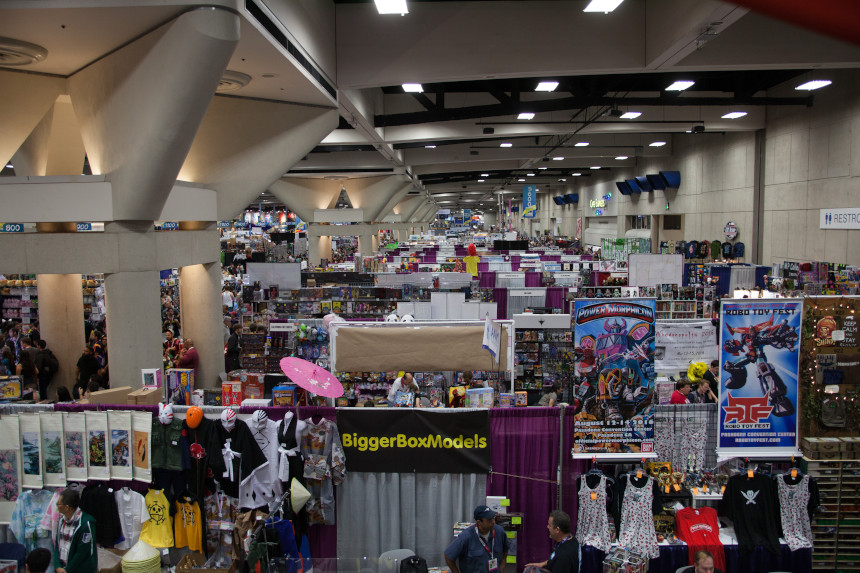
The original show was founded by Shel Dorf, Ken Krueger, Mike Towry, Richard Alf, Bob Sourk, Greg Bear, and Barry Alfonso. Dorf had run some of the first comic book conventions in the 1960s in Detroit before moving to California. The March 21, 1970, Golden State Comic-Minicon was Dorf’s notion of a test flight for a larger show. The Golden State Comic-Con ran from August 1 to 3, 1970. Total attendance was around 300 people.
As the show grew, it shifted through different venues and underwent a series of name changes. It was San Diego’s West Coast Comic Convention in 1972 before becoming San Diego Comic-Con in 1973. Since 1995, the event has been properly called Comic-Con International: San Diego, though many still refer to it as San Diego Comic-Con, SDCC, or, simply, San Diego. (If you say San Diego in a comic book store, they know you aren’t talking about the Padres.) The event itself is organized as a non-profit, and owns registered trademarks on the phrases “Comic-Con” and “Comic-Con International,” which has led to several other shows changing their names in the past several years (with “Comic Convention” or “Comic Fest” being the most frequent substitutions).
From the outset, the founders intended the show to be more than just comics. Creators and fans of science fiction and fantasy literature and film were welcomed from the beginning. In fact, co-founder Bear is an award-winning genre author of more than 50 books. In 1976, Roy Thomas and Howard Chaykin went to the show to promote a new Marvel comic that they were doing, an adaptation of a film that was due out in 1977. They only had a few stills to show to a tiny crowd. Still, it did make the attendees excited about that new movie. It was called Star Wars.
Over the years, as comic shops proliferated, the business boomed, and books like The Uncanny X-Men began to move insane numbers in the 1980s, San Diego got bigger and bigger. What was once an event that attracted 300 people began to attract thousands, then tens of thousands, then one hundred thousand. The mix of fans, creators, exhibiting companies, cosplayers, and occasional film and TV personalities made a potent brew. For years, the show has hosted both the Inkpot Awards, given to outstanding contributors in the genre fields, and the Will Eisner Awards, which are essentially the Oscars of comics. Yes, there were and are other fine conventions around the country, like North Carolina’s Heroes Con or Mid-Ohio Con or New York Comic Con or Chicago’s C2E2, but there has only ever been one San Diego.
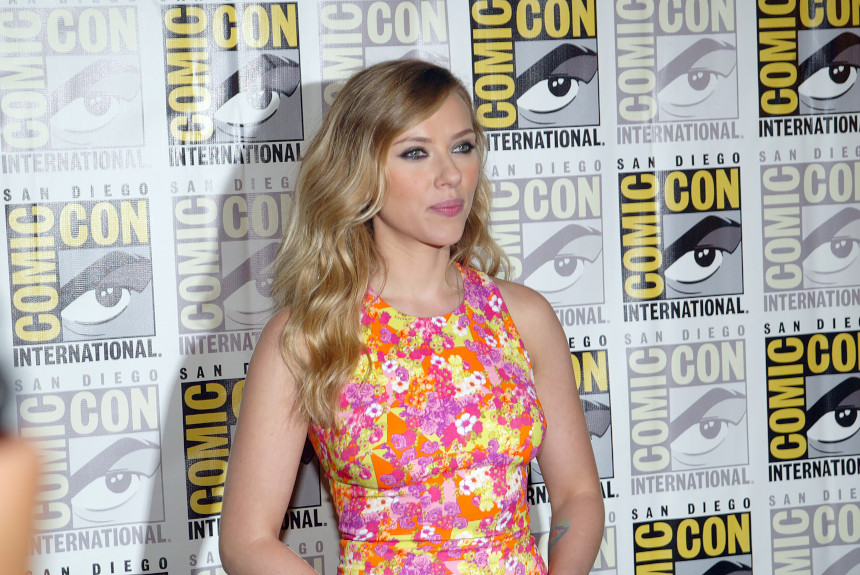
I’d attended or worked at other cons before, but when I got the chance to go to San Diego, it was different. I felt like I was commuting to the beating heart of the pop culture universe. It was a veritable sea of people (attendance was reputedly 125,000 in 2007). It took almost thirty minutes to walk from one side of the main room to the other, and that’s if you didn’t stop. Fangoria hosted actor Michael Madsen (Reservoir Dogs, Kill Bill, etc.) for a signing that year, and I took one of his sons out on the show floor to shop for Star Wars toys. We went to parties for Troma Films and Rue Morgue magazine. A couple of Fango friends and I caught a ride with Ken Foree, the star of George Romero’s horror classic Dawn of the Dead. We exchanged pleasantries in a hotel lobby with Buffy the Vampire Slayer creator Joss Whedon (ironic considering that the MCU was launching that weekend and he’d be back in a few years, announced by Downey as the writer and director of Avengers). It was most certainly surreal.
The unique thing about my SDCC experience is that there was almost nothing unique about my experience. The show is a bright, candy-colored circus for almost everyone who goes. Yes, conventions in general have struggled with issues related to cosplayer safety, and San Diego in particular can be a nightmare when it comes to securing hotel rooms and admission, but the fact remains that as an entity, there’s not much that’s quite like it.
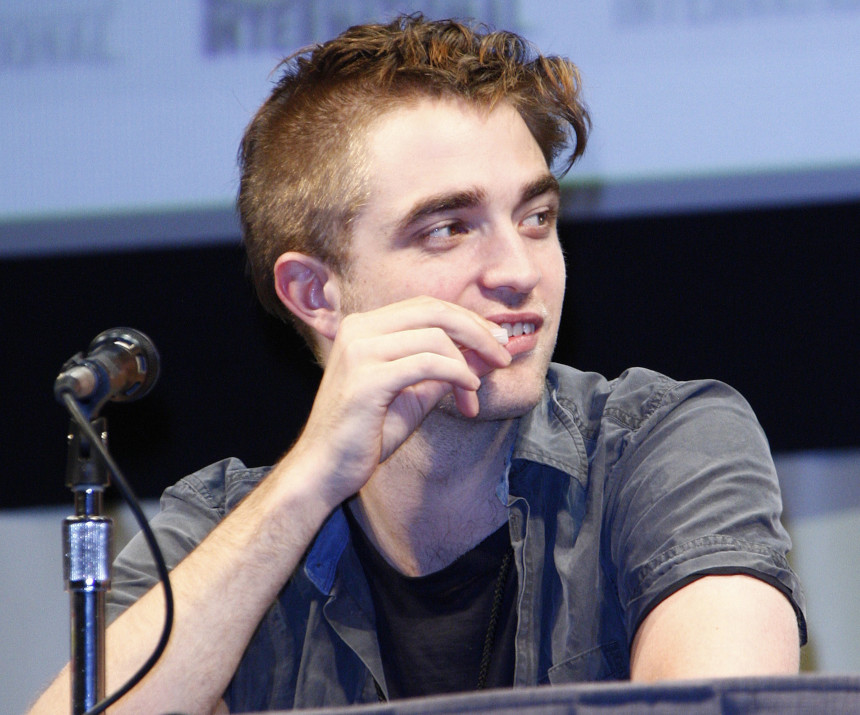
In 2008, which I did not attend, the Twilight Saga made a big splash. A panel for the second film, The Twilight Saga: New Moon crammed 6,000 attendees to see clips from the film and a panel with the cast. Over the next few years, attending fans of that series increased in numbers, leading to grumbling in some quarters about a perceived dilution of the show. Really, though, the disgruntlement seemed to be based on two things: the clogged exhibit hall areas caused by fans trying to jockey for position many hours ahead of the panel (which, okay, fair) and the fact that Twilight appealed primarily to women and girls (absolutely not fair at all). The success of Twilight at SDCC actually proved that the show could be a bigger tent and welcome fans of diverse genres and properties, as well as diverse fans.
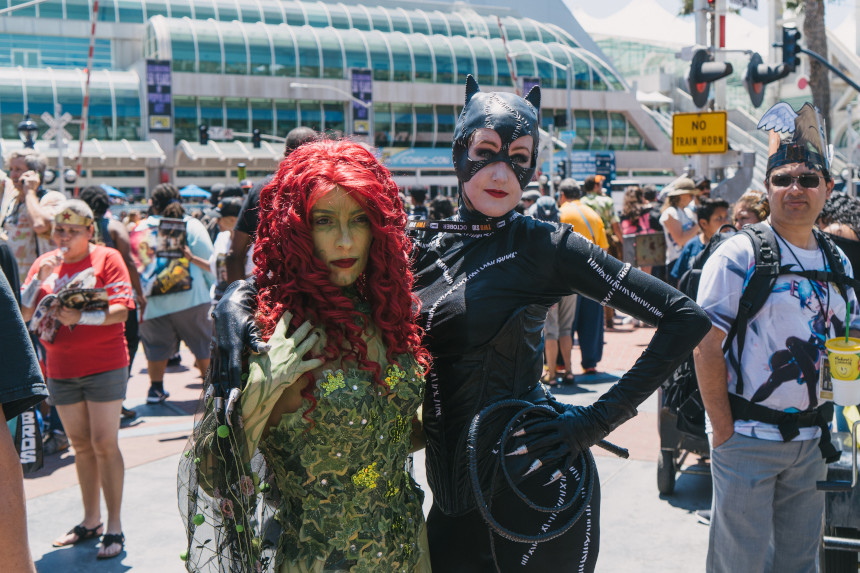
It might be fair for hardcore comic fans to feel a bit like the comics themselves have been marginalized at the show. The biggest reserves of press coverage focus on movie announcements and actor appearances. It’s a hard place to launch a new comic, as a vacuum of overwhelming P.R. tends to swallow smaller pieces of information. But looking too hard in that direction is a denial of the success that the show has become. That stuff that you liked, that stuff that you might have been made fun of for loving? Lots and lots of people like that stuff now, too. Celebrate that, instead of being put off by the fact that more and different people are at the show.
As you know, crowding wasn’t the problem this year. SDCC mounted “Comic-Con@Home,” a virtual effort with remote panels, online exclusive products, watch parties, and more. It was a valiant effort that contained some great virtual events, but of course, not the same. If all goes well in the world, it’s possible that Comic-Con International: San Diego could return next year. The important thing about this show is the same thing that is important about GenCon or any other celebration of fandom: it’s cool to love what you love. And it’s cool that other people get to, too.
Featured image: Sarah Mertan / Shutterstock
Higher, Further, Faster: 5 Things You Need to Know about Captain Marvel
The first female-led film from Marvel Studios, Captain Marvel, starring Brie Larson, opens in wide release just in time for International Women’s Day. It’s an appropriate date, given both the tone and history of the character Carol Danvers. With over 50 years of comics behind her, she’s been a journalist, a fighter pilot, an Avenger, and more. As the certain box office hit opens, we look back at five things you should know about the Captain, and why she’s not the only hero to bear the name.
1. Wasn’t the Shazam! guy called Captain Marvel?
It’s a source of a lot of confusion in both fandom and mainstream circles, but yes, there have been a few Captain Marvels at different companies. The most obscure (and goofiest) was a character from M.F. Enterprises that appeared in a comic series in the mid-1960s. This Captain Marvel was an alien robot that could detach his limbs. However, the character only appeared in a handful of issues before receiving a career-ending legal smackdown during a case that involved both Marvel Comics and DC Comics.
The “Shazam!” Captain Marvel debuted in 1939 in Whiz Comics #2 from Fawcett Comics (the cover date says 1940, but it hit stores a bit earlier). Created by Bill Parker and C.C. Beck, young Billy Batson was chosen by the wizard Shazam to receive super-powers (and an adult body) when he said the wizard’s name. The utterance gave him the wisdom of Solomon, the strength of Hercules, the stamina of Atlas, the power of Zeus, the courage of Achilles, and the speed of Mercury. Billy adopted the name Captain Marvel for his adventuring. In the 1940s, sales of the character rivaled, and occasionally surpassed, those of Superman. Unfortunately for Fawcett, National (as DC was known at that time) took umbrage to the similarities between the good Captain and Superman, and sued in 1941. The legal challenges went on for years through multiple trials and iterations before Fawcett settled for $400,000 and stopped publishing Captain Marvel titles by 1954.
In 1967, Marvel decided to publish their own book called Captain Marvel, starring an alien superhero (more on him in a minute). They registered the trademark. When DC licensed the Shazam! characters from Fawcett for a revival in the 1970s, Marvel challenged them over the use of the title. Since that time, all of DC’s books featuring the character have used the Shazam title due to Marvel’s copyright. Since the 2000s, the character itself is now called Shazam in the comics, and shall be in April’s Shazam! film as well.
2. So who are the Captain Marvels of Marvel Comics?
The first Marvel Comics Captain Marvel was, wait for it, Captain Mar-Vell. Created by Stan Lee and artist Gene Colan, Mar-Vell debuted in Marvel Super-Heroes #12 in 1967. A human-looking alien from the Kree Empire, Mar-Vell is sent to Earth to spy on our planet’s developing space program. Mar-Vell eventually turns against his masters and fights to protect the planet under his new heroic identity. He would become an ally and member of the Avengers.
Originally introduced as a love interest for Mar-Vell by Colan and writer Roy Thomas, Carol Danvers first appeared in Marvel Super-Heroes #13. An Air Force officer, Danvers is handling security at a base and meets Dr. Walter Lawson (Mar-Vell’s newly adopted secret identity). A few issues later, Danvers is caught in an explosion caused by an alien device. Since this is Marvel Comics, accidents with radiation and alien devices invariably give you super-powers.
When Carol Danvers showed up again, it was to headline the new comic Ms. Marvel in 1977. As the titular hero, Danvers had gained super-strength, speed, and the power of flight. The “Ms.” served as a hat-tip to Gloria Steinem; in fact, Danvers would soon be running a magazine and demanding equal pay for her work. She too joined the Avengers and was a mainstay of that comic for several years, even after hers was cancelled in 1979 with issue #23. After some unfortunate writing and editorial decisions removed Danvers from the Avengers title, popular X-Men writer Chris Claremont (who had also written issues of Ms. Marvel) stepped in and brought Danvers to his stable of books in 1982. He gave her a power-up and the new name Binary and sent her off into space with Marvel’s space pirate characters, the Starjammers.
With Ms. Marvel in space and Mar-Vell gone (the character died of cancer in a 1982 special), the name Captain Marvel was available. Writer Roger Stern and artist John Romita Jr. created a new Captain Marvel for The Amazing Spider-Man Annual #16 in 1982. The fact that the new Captain was a black woman, New Orleans harbor patrol officer Monica Rambeau, generated a lot of positive publicity and some mild shock in some fan circles. The energy-powered Rambeau became popular quickly, joining (surprise!) the Avengers and even landing the cover of Marvel’s first role-playing game in 1984. Rambeau ran with the Captain Marvel name until 1996, when she ceded it to Mar-Vell’s son Genis and took the identity of Photon. Rambeau has since had a few different code names; today she’s called Spectrum. During this time, Carol returned to Earth, rejoined the Avengers, and used the name Warbird before becoming Ms. Marvel again.
As for Genis-Vell (created by Ron Marz and Ron Lim), he’s one of three children of Mar-Vell (dude got around). Both Genis and Mar-Vell’s daughter, Phyla, have used the Captain Marvel name over time. Genis headlined a couple of solo series, joined the Thunderbolts, and eventually allowed himself to be destroyed when his powers got out of control and threatened the universe. Phyla-Vell (created by Peter David and Paul Azaceta) would likewise run through a few code names, but her adventures have primarily been showcased alongside the team that she joined, the Guardians of the Galaxy. Mar-Vell’s third child is Teddy Altman, aka Hulkling. The son of Mar-Vell and a Skrull princess, Teddy uses his shape-shifting and strength powers as a member of the Young Avengers, usually preferring an appearance resembling a teen Hulk.
For a brief period, Kree hero Noh-Varr, known as Marvel Boy, was persuaded by villain Norman Osborn to join his so-called Dark Avengers as a new Captain Marvel. Noh-Varr used the name for only a brief time. He soon abandoned Osborn for a role with both the main Avengers team, where he went by the name Protector, and the Young Avengers.
In 2012, Carol finally took the name Captain Marvel and got a new first issue. Written by Kelly Sue DeConnick with art by Dexter Soy, this comic launched the stories that serve as the basis for the character that will be seen in the new film. Danvers maintains membership in the Avengers, but she also leads Alpha Flight, Earth’s space-based first line of defense against alien threats.
3. Speaking of alien threats, who are the Kree and the Skrulls?
The Kree Empire is a conglomeration of worlds run by the Supreme Intelligence. An amalgam of all the great Kree minds stretching back centuries, the Intelligence is seen in comics as a giant green head. In the film, it will be seen as a regular-sized Annette Bening. Kree look like humans, though a number of them have blue skin tones. They frequently represent themselves as having good intentions, but that’s not always the case. Their search for genetic purity resulted in the creation of the Inhumans characters, and other machinations have put them in conflict with the heroes of Marvel Comics many times.
The Skrulls are the sworn enemies of the Kree. Distinguished by green skin, wrinkly chins, and pointy ears, the Skrulls use their shape-shifting abilities to spy and sow chaos. First encountered by the Fantastic Four in their second issue, the Skrulls have bedeviled the Marvel Universe for years, notably during the Secret Invasion story of the 2000s, when they kidnapped and replaced a number of heroes.
The biggest Kree/Skrull story is the “Kree-Skrull War,” which took place over the course of nine issues of The Avengers between 1971 and 1972; it was written by Roy Thomas with art by Neal Adams, Sal Buscema, and John Buscema. It’s been reported that some elements of this story surface in the Captain Marvel film.
4. What makes Captain Marvel important as a character?
Carol Danvers has been breaking stereotypes about female comic book characters for over 50 years. Her military background, ever-increasing power-set, and take-charge demeanor set her apart. The character has been depicted as having to overcome obstacles like sexism, but also personal demons like alcoholism and a rough childhood. She doesn’t always make the right decisions, and her strong will occasionally places her at odds with other heroes.
Nevertheless, she fights from a place of good intentions and maintains a number of strong friendships with other female heroes like Spider-Woman (Jessica Drew) and Rambeau. Her romantic life is often a mess, but that has never been a defining characteristic. Her prominent role in the Marvel Universe is shown to have inspired other heroes. Muslim teen Kamala Khan (created by writer G. Willow Wilson, editors Sana Amanat and Stephen Wacker, and artists Adrian Alphona and Jamie McKelvie) became the new Ms. Marvel in 2014 as a tribute to Danvers.
In the films, Captain Marvel’s solo movie sets us up for the character’s entry in Avengers: Endgame in April. That film, the 22nd entry in Marvel’s Cinematic Universe, wraps up the original three “phases” of the MCU that began with Iron Man in 2008. Marvel Studios president Kevin Feige has noted more than once that Captain Marvel will be one of the central characters of the MCU as the post-Endgame slate of films proceeds.
5. That’s all great, but what about Goose the cat?
The first trailer for Captain Marvel (Uploaded to YouTube by Marvel Entertainment)
In the comics, Captain Marvel’s cat is named Chewie, after Chewbacca from the Star Wars saga. They renamed Chewie “Goose” in the film as a tribute to Tom “Maverick” Cruise’s Radio Intercept Officer sidekick played by Anthony Edwards in Top Gun. As for Goose’s overall importance . . . let’s just say she’s probably a little bit more than she initially appears to be.
Feature image: Shutterstock
10 Comics You Should Read Right Now
Read our article, Be Heroic! It’s International Read Comics in Public Day!
Comics aren’t just for ten-year-old boys anymore. Which comics should you be reading? There are thousands of series to choose from, so where’s a beginner to start?
That’s where I come in. I’m the resident comic book guy, and that’s because I’ve lived the entire cycle from fan to comics journalist to published pro comic book writer. This isn’t an exhaustive list by the stretch of anyone’s imagination, but it might provide some hints of where you might like to start. I don’t list every creative contributor to every volume mentioned, but that in no way diminishes the contributions of the writers, artists, letterers, colorists, and editors that work hard every day to entertain their readers.
1. If You Like Marvel Movies
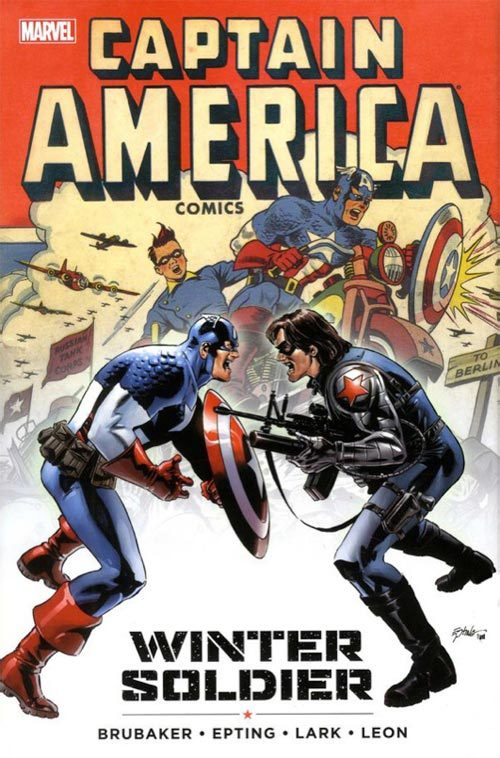
You might have 10 years of the Marvel Cinematic Universe, but you’ve got about 79 years of Marvel comics. A few gems that might pique the interest of the Marvel moviegoer include Captain America: The Winter Soldier by Ed Brubaker and Steve Epting, the Hawkeye solo series by Matt Fraction and David Aja, any Thor book written by Jason Aaron, the various volumes of Guardians of the Galaxy written by Dan Abnett and Andy Lanning, Black Panther: A Nation Under Our Feet by Ta-Nehisi Coates and Brian Stelfreeze, and the original Infinity Gauntlet by Jim Starlin, George Perez, and Ron Lim.
2. If You Like the Justice League
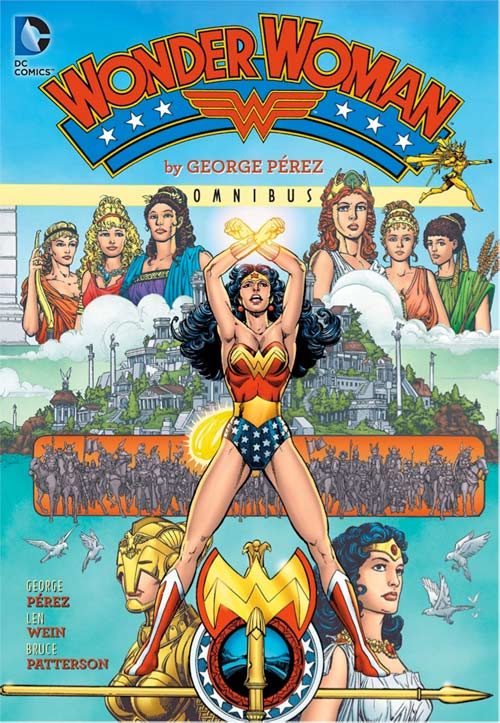
So you grew up with the Super Friends or Justice League on TV and you love the Big Guns of the DC Universe. You’re in luck: You have some of the most acclaimed comics ever ahead of you. Check out 1986’s The Dark Knight Returns by Frank Miller and Klaus Janson, which set the stage for the Batman of the movies. Grant Morrison and Frank Quitely’s All-Star Superman captures the essence of the Man of Steel. The various volumes of Wonder Woman by George Perez give you some classic Diana stories. And Grant Morrison’s masterful run on JLA with Howard Porter and others redefined the group for the modern audience.
3. If You Like Biographies/Autobiographies
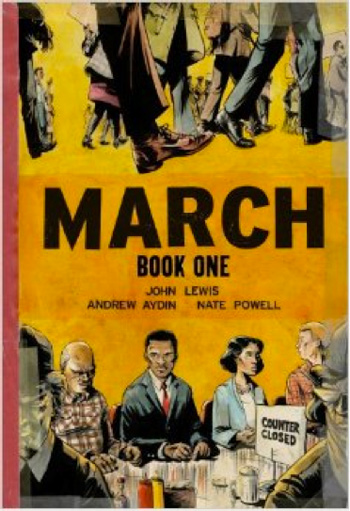
Comics are not just super-heroes. Super-heroes are the “cop show” of comics; there are a lot of them out in there in a lot of flavors, but they aren’t the only thing to watch. In fact, a number of incredible biographies exist in comic form. One of those is The Fifth Beatle: The Brian Epstein Story by Vivek J. Tiwary, Andrew C. Robinson, and Kyle Baker; it tells the story of the Fab Four’s visionary but doomed manager. A towering achievement in comics bio (and autobio) is Top Shelf’s March trilogy by John Lewis, Andrew Aydin and Nate Powell. The John Lewis in question is indeed the legendary congressman that fought for civil rights, and his story is rendered wonderfully by the sublime art of Powell. One more I can’t pass up is Fun Home: A Family Tragicomic by Alison Bechdel (also known as creator of the Bechdel test). With unflinching honesty, Bechdel deals with family secrets, including her own. And there’s also Marjane Satrapi’s Persepolis and Craig Thompson’s Blankets and Art Spiegelman’s Maus . . . okay, time to move on.
4. If You Like The Lord Of The Rings, But Wish It Were Funnier
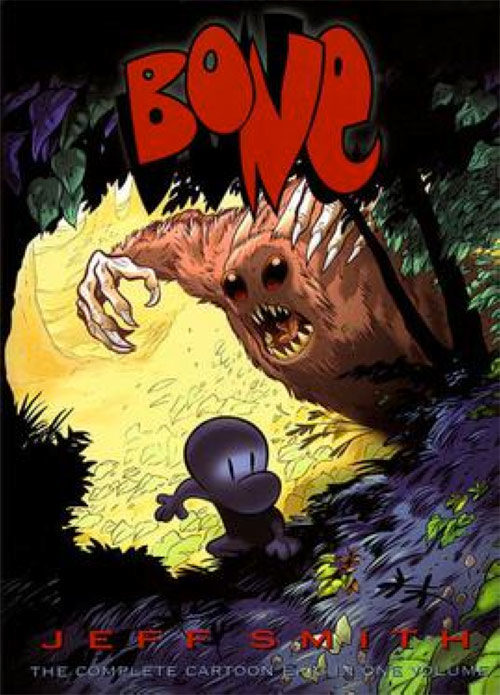
Believe me, there’s a metric ton of awesome fantasy comics out there, but I keep coming back to Bone. Jeff Smith’s magnum opus is available in one complete volume. In it, three cousins that look like funny comic strip characters stumble in a high fantasy valley on the verge of war. Becoming embroiled in events both hilarious (The Great Cow Race) and terrifying (the Lord of the Locusts may haunt your dreams), the cousins try to help their new friends while searching for a way back home. A sheer delight from cover to cover, Bone has won 10 Eisner Awards and is beloved around the world. Don’t miss it.
5. If You Like Teenage Heroes
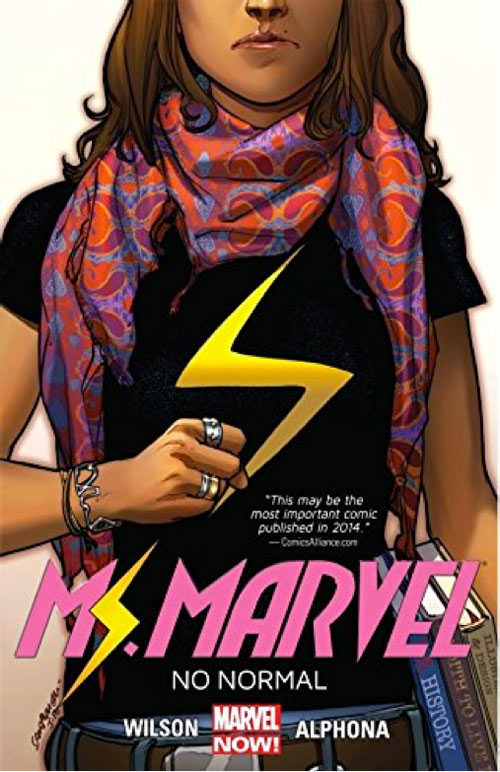
While there’s no shortage of teen heroes in comics, I’m going to focus a little bit on the Big Two of Marvel and DC. In recent years, Marvel’s had a bit of a teen hero renaissance with G. Willow Wilson’s Ms. Marvel at the forefront. Ms. Marvel is Kamala Khan, a Muslim Pakistani-American teen with shapeshifting powers and an encyclopedic knowledge of super-heroes. Though only introduced five years ago, Kamala has made her way into animation, action figures, and the comic book ranks of The Avengers. She’s also a member of teen team The Champions, which gathers a number of Marvel’s youth movement in one book. Kamala also shares the Marvel Rising animated series with The Unbeatable Squirrel Girl, a ridiculous-heroine with a thoroughly hilarious series (for you Netflix fans, she’s Luke Cage and Jessica Jones’s babysitter).
On the DC side, the terrific Super Sons books follow Superboy (Jonathan Kent, son of Clark and Lois) and Robin (Damian Wayne, son of Bruce and his enemy Talia ah Ghul). As written by Peter J. Tomasi, every issue contains at least one laugh-out-loud moment centering on the grudging friendship between the relentlessly upbeat Superboy and the comically dour Robin. Robin is also featured in DC’s young hero hang-out, Teen Titans.
6. If You Like Mysteries
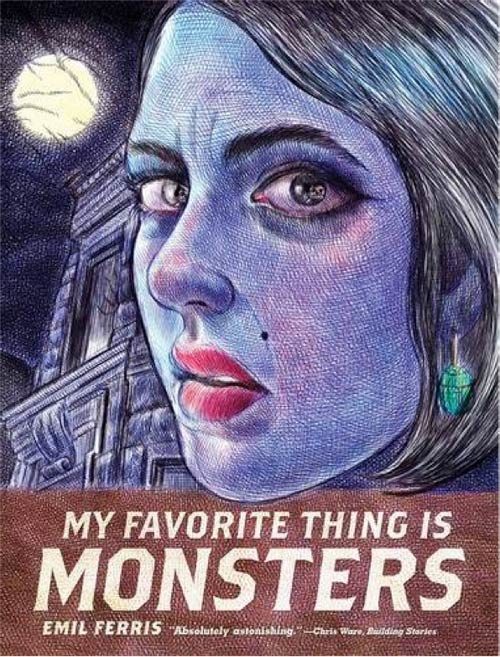
There are enough mystery series and original graph novels in comics for lit sites to run features on the top 10, or 25, or 50 mystery comics. I’ll hat-tip three. Torso, published at Image Comics by Brian Michael Bendis and Mark Andreyko, is a fictionalized account of the true story of the hunt of the Cleveland Torso Murderer of the 1930s by legendary lawman Eliot Ness. Batman: The Long Halloween by Jeph Loeb and Tim Sale gives us an early case from Batman’s career as he hunts a holiday-themed serial killer for a calendar year. The last one, My Favorite Thing is Monsters, published by Fantagraphics, has a story behind it that’s almost more remarkable than the book itself. After suffering from paralysis brought on by West Nile virus, writer and artist Emil Ferris fought her way back to recovery while working on her 700-page mystery. It won three Eisner Awards last year and is widely considered the best graphic novel of 2017.
7. If You Like Shakespeare, Gothic Culture, and General Amazement:
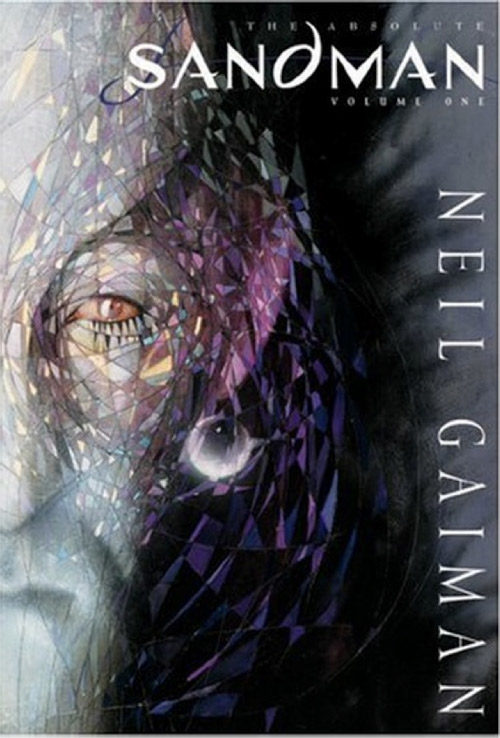
The Sandman series, by writer Neil Gaiman and a murderer’s row of incredibly talents artists, remains one of the great achievements in comics. After a period of captivity, Morpheus, the king of dreams, tries to reunite with his fractured family, including his loveable sister Death. A high point in fantasy, the series defied conventions and came to stand for “literary comics” in the best possible sense. Gaiman, of course, has continued to produce stellar works in comics, prose, and other media (American Gods, anyone?).
8. If You’re Anywhere from K-12
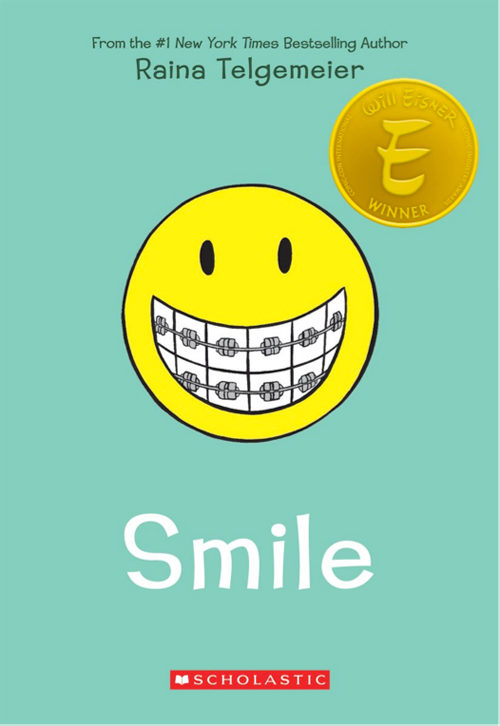
If you don’t know Raina Telgemeier, your kids or grandkids do. A one-woman brand that means great, heartfelt comics, Telgemeier built up a solid resume of work before breaking out with the autobiographical Smile in 2010; it stayed on The New York Times bestseller list for more than 220 weeks. Each subsequent release (Drama, Sisters, and Ghosts) has only expanded her popularity and demonstrated her unique sensitivity to the real issues affecting young people. To borrow another publishing phrase, she’s a wonder.
9. If You Like It Deconstructed
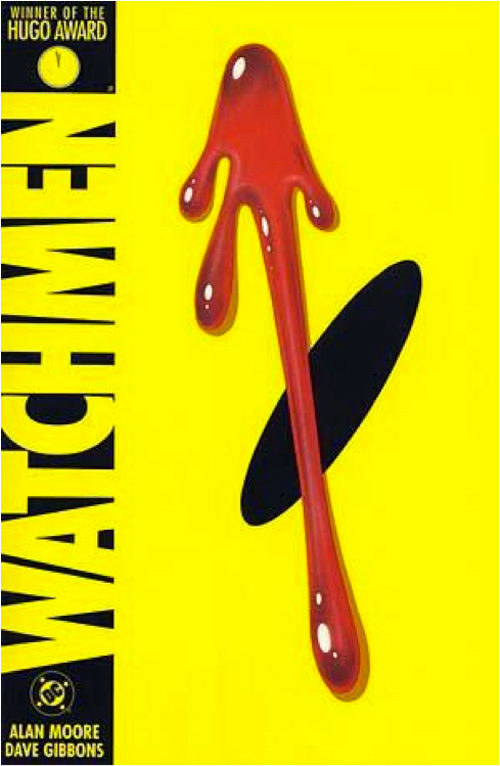
Alan Moore got big in super-hero comics, then he wanted to burn it all down. Seen by many as the author laureate of the comics form, Moore rebuilt DC’s Swamp Thing into a work of post-modern horror before turning his attention to the entire super-hero genre. Watchmen, with Dave Gibbons, remains a perennial bestseller and one of the things that pushed super-stories into the darkness in 1986. Since then, his vast repertoire of books like V for Vendetta, From Hell, The League of Extraordinary Gentlemen, and more continue to showcase his stunning attention to detail and his mastery of a medium that he keeps pushing toward maturity.
10. If You Like to Be Scared
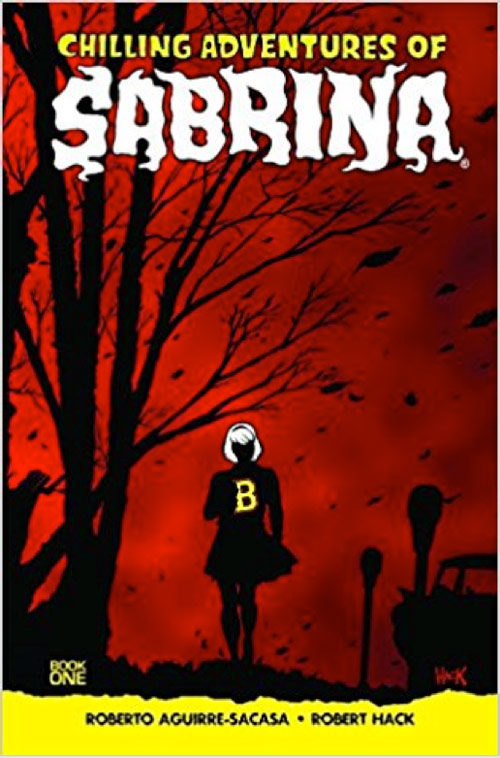
Well, you’re in luck. Horror abounds in comics. Easily the bestselling horror series of the last decade is The Walking Dead, basis for the TV show with a massive fanbase; if you follow Rick, Michonne, and Negan, it all started here. I also heartily endorse Uzumaki by Japanese horror manga legend Junji Ito; a masterwork of paranoia and Cronenbergian “body horror,” it’s an incredible unsettling read. And if you’re wondering why I haven’t mentioned Archie yet, that’s because I’ve been saving it. In the past few years, Archie Comics have totally reinvented themselves with a variety of series that take the characters into startling new directions. Two of the best are the horror titles Afterlife with Archie and Chilling Adventures of Sabrina, both written by Archie Comics Chief Creative Officer Roberto Aguirre-Sacasa (who also developed, executive produces, and writes for the Archie-derived TV series Riverdale).
Get out to your own local comic shop (or local library; graphic novel sections are huge there) and find what you like. And feel free to make your own recommendations in the comments below!